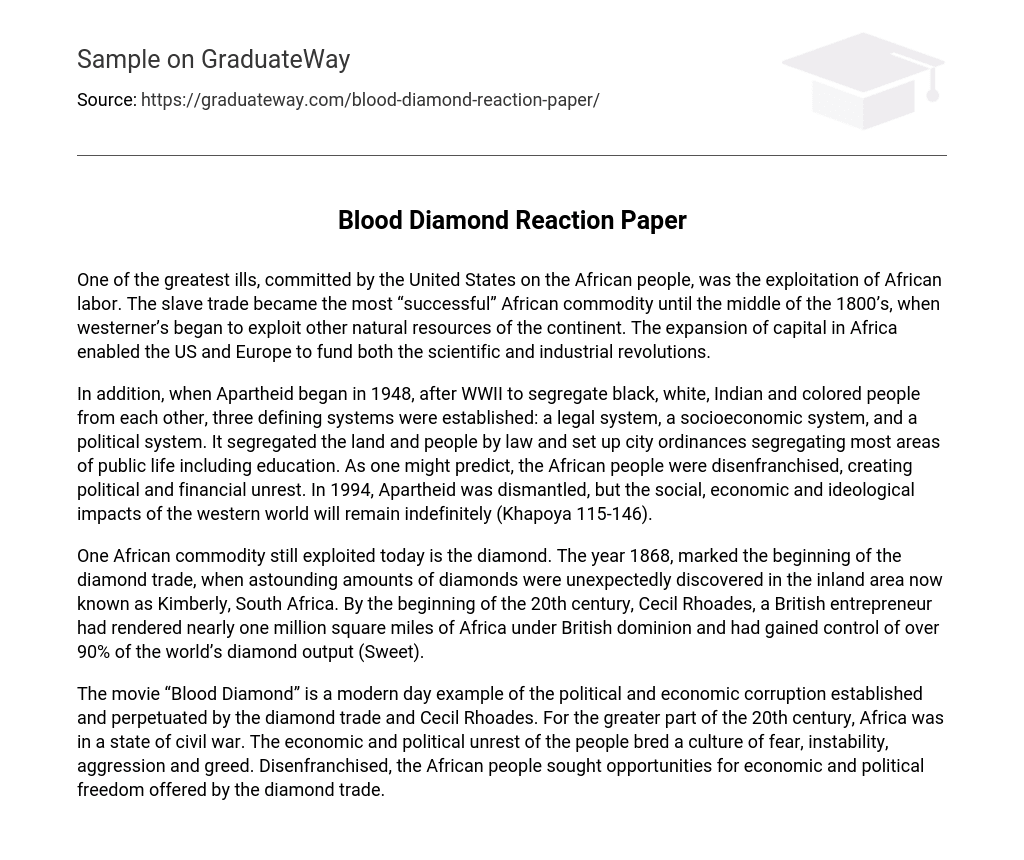One of the greatest ills, committed by the United States on the African people, was the exploitation of African labor. The slave trade became the most “successful” African commodity until the middle of the 1800’s, when westerner’s began to exploit other natural resources of the continent. The expansion of capital in Africa enabled the US and Europe to fund both the scientific and industrial revolutions.
In addition, when Apartheid began in 1948, after WWII to segregate black, white, Indian and colored people from each other, three defining systems were established: a legal system, a socioeconomic system, and a political system. It segregated the land and people by law and set up city ordinances segregating most areas of public life including education. As one might predict, the African people were disenfranchised, creating political and financial unrest. In 1994, Apartheid was dismantled, but the social, economic and ideological impacts of the western world will remain indefinitely (Khapoya 115-146).
One African commodity still exploited today is the diamond. The year 1868, marked the beginning of the diamond trade, when astounding amounts of diamonds were unexpectedly discovered in the inland area now known as Kimberly, South Africa. By the beginning of the 20th century, Cecil Rhoades, a British entrepreneur had rendered nearly one million square miles of Africa under British dominion and had gained control of over 90% of the world’s diamond output (Sweet).
The movie “Blood Diamond” is a modern day example of the political and economic corruption established and perpetuated by the diamond trade and Cecil Rhoades. For the greater part of the 20th century, Africa was in a state of civil war. The economic and political unrest of the people bred a culture of fear, instability, aggression and greed. Disenfranchised, the African people sought opportunities for economic and political freedom offered by the diamond trade.





